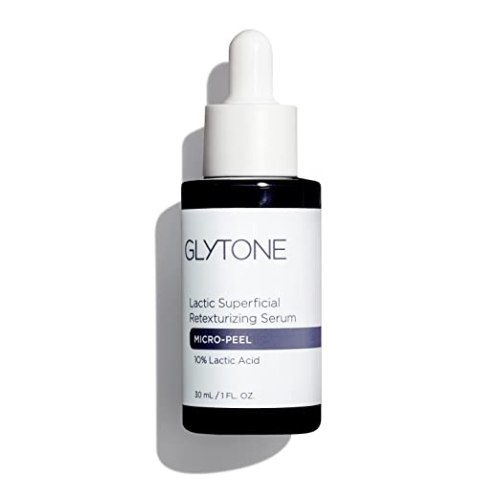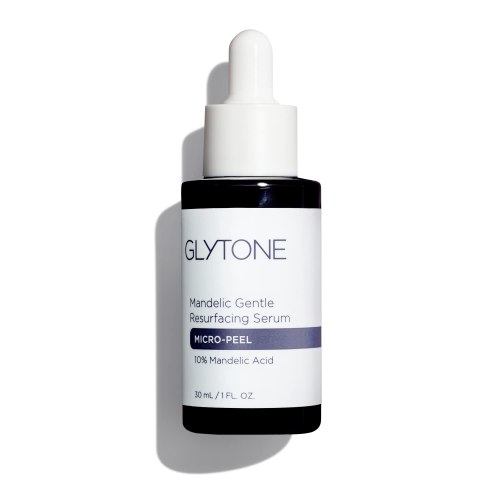Our editors independently select these products. Making a purchase through our links may earn Well+Good a commission
Fall is the perfect time for a chemical peel because the treatment serves double time to undo summer sun damage while also prepping your skin to absorb the hydrating ingredients you’ll be using all winter. But though aggressive, in-office chemical peels definitely work, they tend to come with some pretty significant side effects. At best, they’ll make your face shed like a snake for the better part of a week (which, believe it or not, is actually supposed to happen), and at worst, they’ll leave you red and irritated (which decidedly is not). The fix? Glytone’s new “micro peels,” which are here to gently—and effectively—resurface your complexion at home.
Experts in This Article
board-certified dermatologist at Medical Dermatology and Cosmetic Surgery in New York
Chemical peels (regardless of strength) use exfoliating acids like alpha- and beta-hydroxy acids to remove dead cells from the surface of your skin. “This helps reduce dullness, even out discoloration, and improve overall texture and tone of skin,” says Marisa Garshick, MD, a board-certified dermatologist in New York City. “Peels can also help to boost collagen production and improve the overall appearance of fine lines and wrinkles. By eliminating dead skin cells, chemical peels can also help to soften and smooth the skin while also reducing clogged pores.”
Micro peels offer these same benefits, but with less intensity. “While at-home chemical peels and in-office chemical peels may use similar ingredients, the concentration may be higher for in-office peels and as a result, may offer deeper penetration, with superficial, medium-depth, and deep peels offered in an in-office setting,” says Dr. Garshick. “Typically an at-home micro peel is not as strong as an in-office peel, which makes it gentle on the skin and easier to tolerate.” This makes them a great option for anyone who doesn’t want to pay up for a derm- or aesthetician-grade treatment or who doesn’t want to commit to any post-treatment downtime (FWIW: Most in-office peels are followed by four to five days of intense skin peeling, which can be a non-starter for some).
Each of Glytone’s peels is designed to target a different concern, so whether you’re dealing with discoloration, uneven texture, or some combination of both, there’s a formula for you. Learn more about the TranExamide Discoloration Treatment Serum ($80) the Lactic Superficial Retexturizing Serum ($70), and the Mandelic Gentle Resurfacing Serum ($74)—and shop them all—below.
Shop the three new Glytone micro peels

TranExamide Discoloration Treatment Serum — $80.00
“Designed to help with sun spots and skin discoloration, this serum incorporates tranexamic acid, kojic acid, and niacinamide to help brighten the skin,” says Dr. Garshick. “It’s safe for all skin types, this can be used nightly to help even skin tone and reduce hyperpigmentation.”

Lactic Acid Superficial Retexturizing Serum — $70.00
“This gentle exfoliant uses 10 percent lactic acid which helps to brighten the skin and improve skin tone, while also hydrating the skin using hyaluronic acid,” says Dr. Garshick. “It can be used to reduce dullness and improve skin texture by helping to soften and smooth rough, dry skin. This also contains rosemary and tea tree leaf oil which helps to soothe the skin. It is gentle on the skin, making it a good option for all skin types, especially for those with dry, dull, or dehydrated skin.”

Mandelic Gentle Resurfacing Serum — $74.00
“Especially good for those with sensitive skin or redness-prone skin, this gentle exfoliant uses mandelic acid, phytic acid, and pomegranate enzyme to remove dead skin cells to improve skin texture and tone, while also helping to calm redness, using Agastache Mexicana Flower,” says Dr. Garshick. “It is especially good for those with sensitive or rosacea or redness-prone skin who are looking to exfoliate.”
Get more exfoliating tips:
Want to be the first to hear about the latest (and greatest) SHOP product drops, custom collections, discounts, and more? Sign up to have the intel delivered straight to your inbox.
Sign up for the Well+Good SHOP Newsletter
Get exclusive deals on wellness, beauty, fitness, and food products that have been hand-picked by our editors.
Got it, you've been added to our email list.











